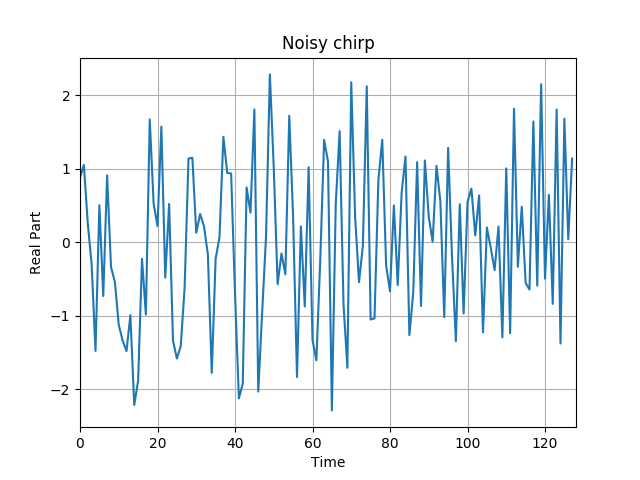Note
Click here to download the full example code
Generating a Noisy Chirp¶
This example shows how to generate a chirp signal, with some analytical gaussian noise, and the usage of the sigmerge function to combine them.
Figure 1.4 from the tutorial.

from tftb.generators import fmlin, sigmerge, noisecg
import matplotlib.pyplot as plt
import numpy as np
# Generate a chirp signal
n_points = 128
fmin, fmax = 0.0, 0.5
signal, _ = fmlin(n_points, fmin, fmax)
# Noisy chirp
noisy_signal = sigmerge(signal, noisecg(128), 0)
plt.plot(np.real(noisy_signal))
plt.xlim(0, 128)
plt.title('Noisy chirp')
plt.ylabel('Real Part')
plt.xlabel('Time')
plt.grid()
plt.show()
Total running time of the script: ( 0 minutes 0.149 seconds)